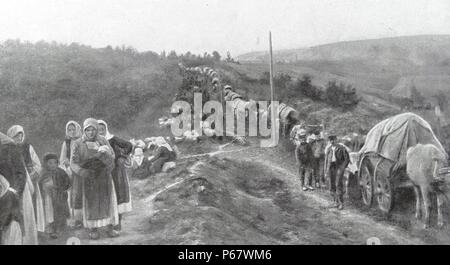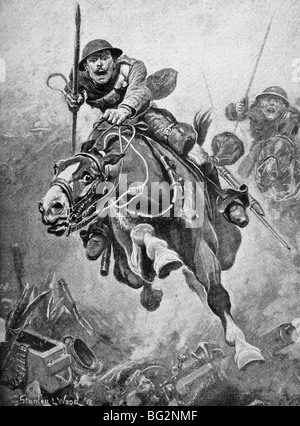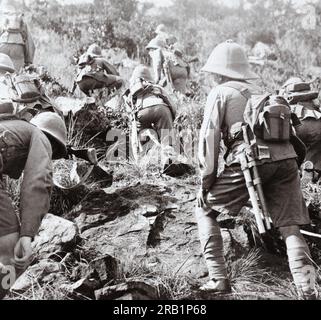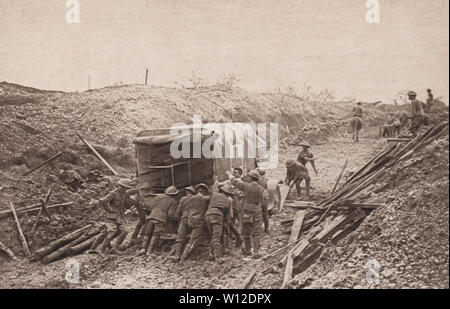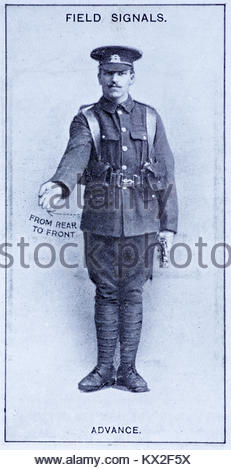
RMKRAWWM–World War One photograph - French refugees fleeing Paris in a cart as the Germans advance on the city - From an early WWI magazine
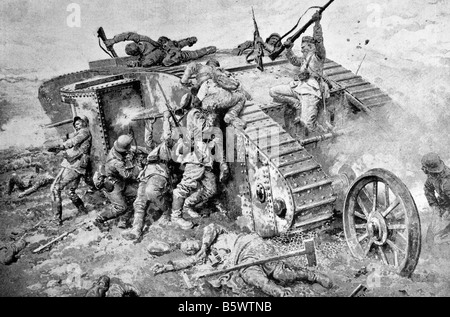
RMB5WTNB–Contemporary World War One illustration of a futile attack by German soldiers on a British tank in France.

RM2M3P48T–The Battle of Mons, the British Expeditionary Force's first major action in World War One.In the face of a greater German force, the British could do no more than delay the German advance, and were forced to retreat. Here, the crucial change of front is being carried out, British regiments wheeling back with covering fire from their artillery. 24 August 1914
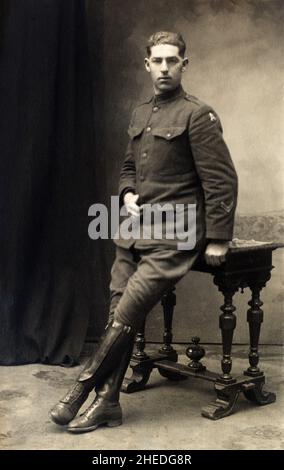
RM2HEDG8R–First World War era portrait of a American soldier, a Private in the US Third Army. The two chevrons on his lower left arm signifies he has had at least 12 months service in the 'Zone of the Advance'. Believed to have been taken in Germany c.1919 during service with the US army of occupation.

RM2M99MCH–The Reginas landed on D-Day opposite one of the most heavily defended German positions along Juno Beach. Using the DD tanks of the 1st Hussars the Canadians got ashore and the 3rd Divison would go on to make the deepest D Day advance of all Allied forces. The plaques are in French and English and the message is 'Bretteville will not forget'.
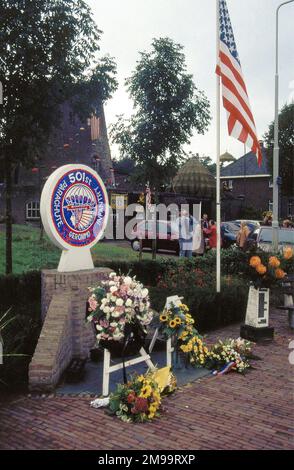
RM2M99RXP–During Operation Market Garden in September 1944, the airborne forces were charged with capturing a series of bridges over waterways that impeded the ground troops advance. In the struggle to the west of Veghel on the Zuid-Willemsvaart Canal, the 501st were involved in hand-to-hand fighting as they struggled to hold open 'The Corridor', the name given to the road over all the bridges once they had been captured. There are a number of memorials here including this main one which was erected in 1981. It has the colourful badge of the Regiment showing the head of the Apache Geronimo (their batt
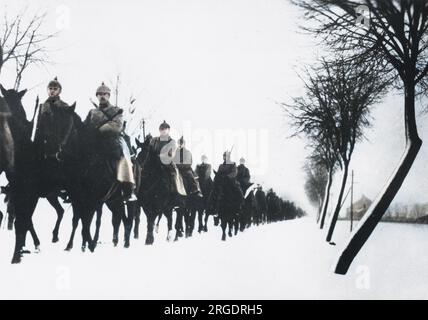
RM2RGDRH5–German cavalry advance during the Second Battle of the Masurian Lakes, also known as the Winter Battle of the Masurian Lakes. This was part of Hindenberg's plan to push Russia back beyond the Vistula river with the aim of forcing Russia out of the war and bringing about the end of the war on the Eastern Front. The battle began in a heavy snowstorm on 7 February 1915. By the 22 February, Russian forces had suffered severe losses of troops and territory, but had succeeded in halting the German progress short of their aims.
